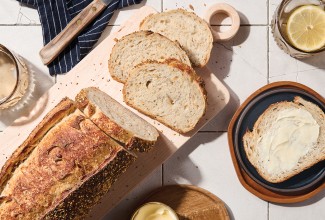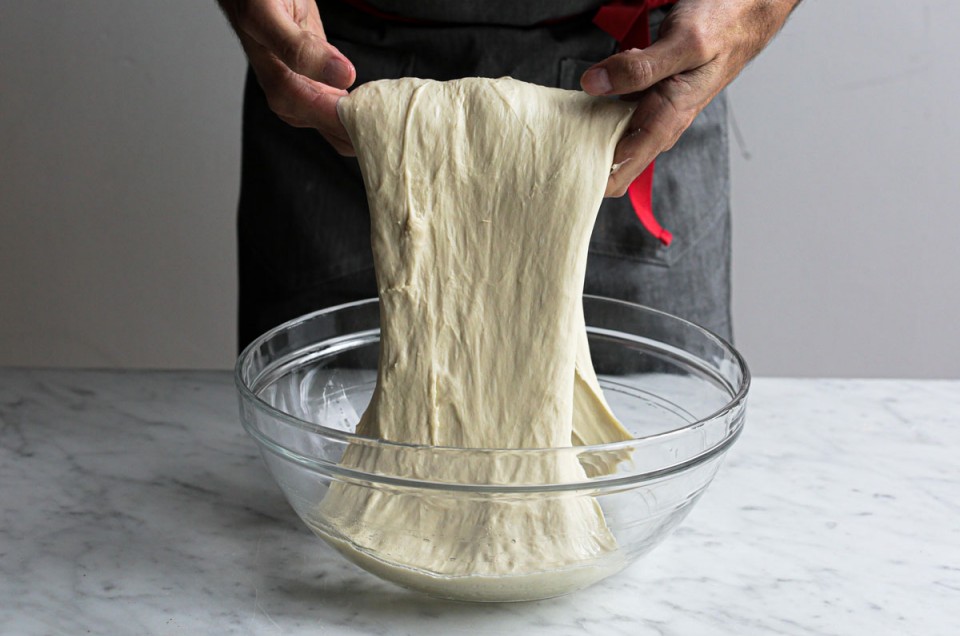


For even the most elementary bread baker, kneading is a familiar term and technique (and if you’re new to it, watch our video, How to Knead Bread Dough). But what if, instead of kneading, a recipe instructs the baker to fold their dough?
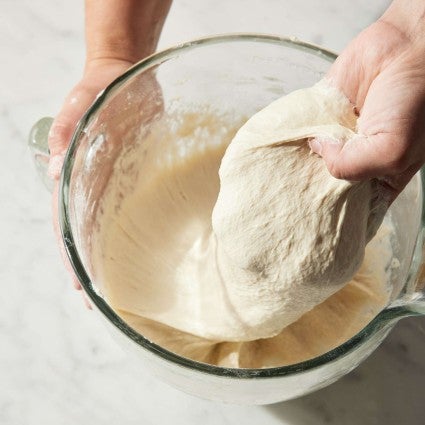
First, let’s talk why you knead or fold bread dough. When you first combine flour and water, gluten begins to develop, forming an elastic, extensible network that’s able to capture the carbon dioxide expelled by yeast (both the wild yeasts in sourdough culture and commercial yeast). And though that shaggy mass of flour and water has already started to develop gluten, it still lacks strength and falls apart easily. This is where kneading and folding come in.
Folding typically involves folding sections of the dough over itself throughout bulk fermentation; there are several different methods, which I describe in greater detail below. It’s gentler than kneading, but is done for the same reason: Folding helps strengthen the gluten network, allowing the short chains of gluten to link up into longer strands, resulting in a dough that’s more extensible and therefore better able to trap the gases expelled by yeast. During the kneading or folding process, the dough transforms from a shaggy mass into a smooth, elastic dough.
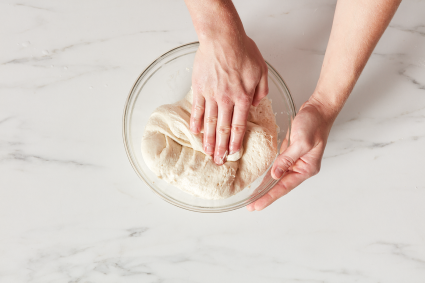
Kneading is a more vigorous process than folding; it typically happens at the start of bulk fermentation and can be done by hand or in a machine. It’s a great method for breads that will have a shorter overall fermentation (or rising) period, such as those made with commercial yeast, as it quickly kickstarts development.
Folding, by contrast, is a gentler (and more gradual) way of building strength and elasticity in dough. It is typically recommended in bread recipes that are made with sourdough culture, like Pain de Campagne and No-Knead Sourdough Bread, though it can be used in almost any bread recipe in place of kneading. The dough is folded by hand at regular intervals for the first hour or so of bulk fermentation, after which the dough is left to do a longer, slower fermentation, during which time the glutinous network continues to develop, and the dough develops flavor. For a full run-down of how and when to fold, check out Maurizio Leo’s blog, Bulk fermentation, explained.
There are a few different ways to fold bread dough, but the most common are bowl folds and coil folds.
To perform a bowl fold: With wet hands, reach into the bowl, grab the underside of a section of dough and gently stretch it upwards until you begin to feel resistance, then fold it over the top of the mass of dough. Rotate the bowl 90 degrees (a quarter turn) and repeat until you’ve done a full rotation, then turn the dough over so the folds are underneath.
To perform a coil fold: With wet hands, reach under the dough and gently stretch the middle upward until the dough releases from the bowl. Roll it forward off your hands, allowing it to fold over (or “coil”) on itself. This is called a coil fold. Rotate the dish 90 degrees (a quarter turn) and repeat. Continue performing this folding action until the dough feels like it won’t stretch and elongate easily, usually four to five times initially.
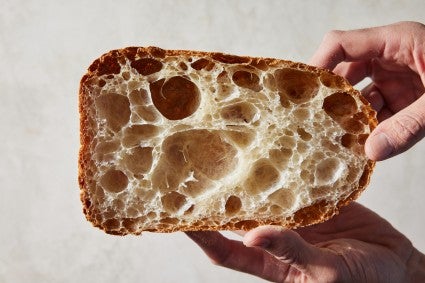
Since both kneading and folding strengthen dough and develop the gluten network (albeit on different timetables), you might be wondering why some bread recipes instruct you to knead your dough and others instruct you to fold.
In some cases, it’s a matter of baker preference (see baker Martin Philip’s impassioned argument for folding, Why this pro baker doesn’t knead). Philip argues that “folding achieves the greatest amount of dough strength for home bakers,” and it’s a great choice if you don’t own a stand mixer or don’t want to knead dough by hand for a long time, but still want to make bread. But there are also practical considerations for choosing one method over the other. For example, in the case of high-hydration doughs (also known as slack doughs) like Pan de Cristal, kneading such a sticky mass by hand is basically impossible, but folding with a wet hand is easy. (For more on working with high-hydration doughs, see this blog, 5 tips for working with high-hydration doughs.)
For enriched doughs, like buttery brioche or plush, fluffy milk bread, it’s difficult to properly incorporate the butter into the dough by hand through folding; for these recipes, kneading by machine is recommended.
Ultimately, both folding and kneading each have their useful applications, and mastering the techniques (and knowing when to use them) will make you a better bread baker.
Cover photograph by Martin Philip.
